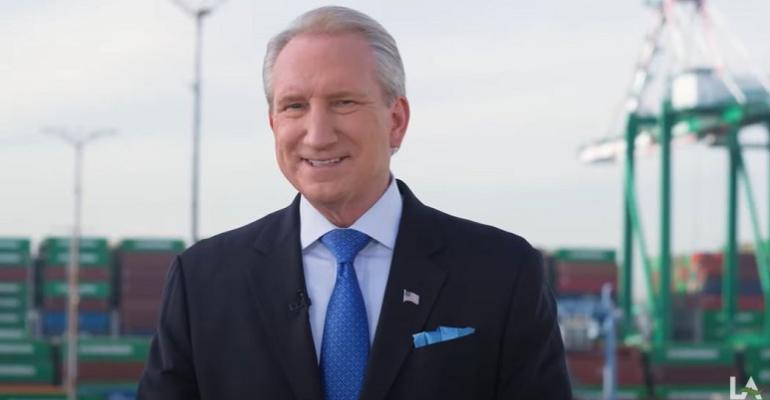In a wide-ranging discussion moderated by the Port of LA Executive Director, Gene Seroka, ports consultant Dan Hackett, who works closely with high profile logistics clients including the very influential National Retail Federation (NRF) offered his views on possible voyages ahead for liner shipping.
Hackett is widely known for the oft-quoted North American edition of the “Global Port Tracker”, produced in conjunction with the NRF, which looks at movements of cargo through US ports. In its latest edition, Hackett looks for inbound containers to be on a rising trajectory, as imports are continuing to climb out of a post-pandemic cargo movement trough.
The switch out of the late 2022- mid 2023 nadir is evidenced by an observation in a recent issue of the Quarterly Financial Report produced by container sector veteran John McCown, who wrote that prior to the uptick in the carriers’ 1Q 2024 uptick in profitability comes following six quarters of downward earnings.
Hackett’s appearance on the Seroka webinar was timely, coming only weeks after a Biden administration announcement that it would be soon be raising import tariffs on certain Chinese goods, including semi-conductors, solar cells and electric vehicles. In his interview with Seroka, Hackett said: “In general, things like tariffs are not great for consumers…essentially the consumers end of paying for these tariffs.” He described the new tariffs as “industry focused and quite high”. He suggested, reminiscent of the onset of Trump imposed tariffs in 2018, that importers of impacted items would “try and bring forward any [importing] plans that they had…so they are able to not have to pay the tariffs.”
Hackett alluded to an ongoing “China + 1” strategy, where many US importers are diversifying into other cargo origins within Southeast Asia, but added that: “Right now, China is still the dominant import origin for containerised imports [by weight]” into the States.
An important maritime related aspect of the new tariffs was mentioned only in passing on the Port of LA call; this will be the impact of tariffs on maritime equipment, noting recent concerns about potential cyber-related issues with cargo cranes from China. In the President’s statement on the new tariffs, the White House says that: “The tariff rate on ship-to-shore cranes will increase from 0% to 25% in 2024.”
In their brief, they state: “The Administration continues to deliver for the American people by rebuilding the United States’ industrial capacity to produce port cranes with trusted partners. A 25% tariff rate on ship-to-shore cranes will help protect US manufacturers from China’s unfair trade practices that have led to excessive concentration in the market. Port cranes are essential pieces of infrastructure that enable the continuous movement and flow of critical goods to, from, and within the United States, and the Administration is taking action to mitigate risks that could disrupt American supply chains.”
Increasingly, in the United States’ foreign policy, there are linkages between economics and national security. Though cyber concerns are not mentioned specifically, the wording in the White House briefing strongly implies that such a connection is indeed a motivator for including cargo handling equipment.
The Presidential statement, discussing the tariffs on cargo handling cranes reads as follows: “This action also builds off of ongoing work to invest in US port infrastructure through the President’s Investing in America Agenda. This port security initiative includes bringing port crane manufacturing capabilities back to the United States to support US supply chain security and encourages ports across the country and around the world to use trusted vendors when sourcing cranes or other heavy equipment.”
Resource:
Copyright © 2024. All rights reserved. Seatrade, a trading name of Informa Markets (UK) Limited.
Add Seatrade Maritime News to your Google News feed.  |

